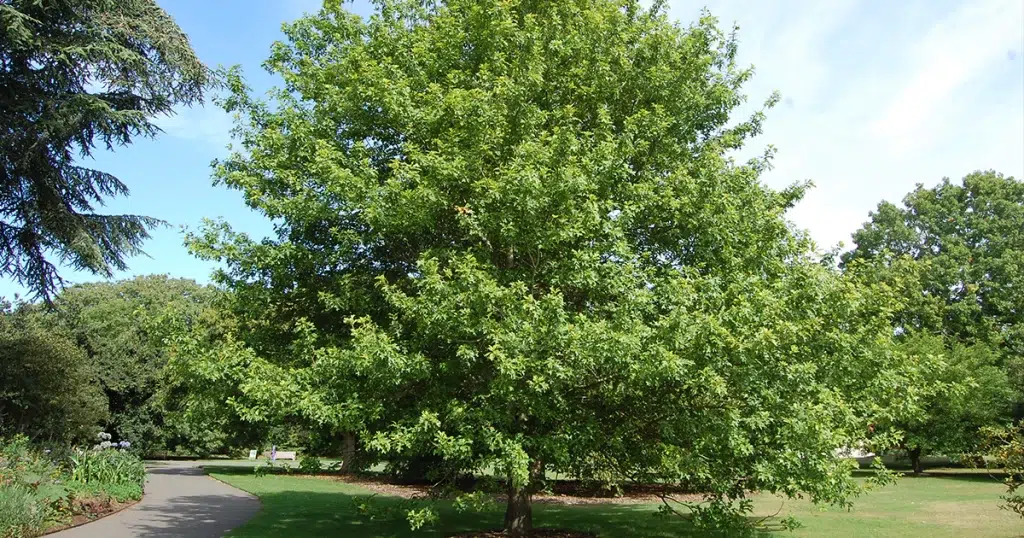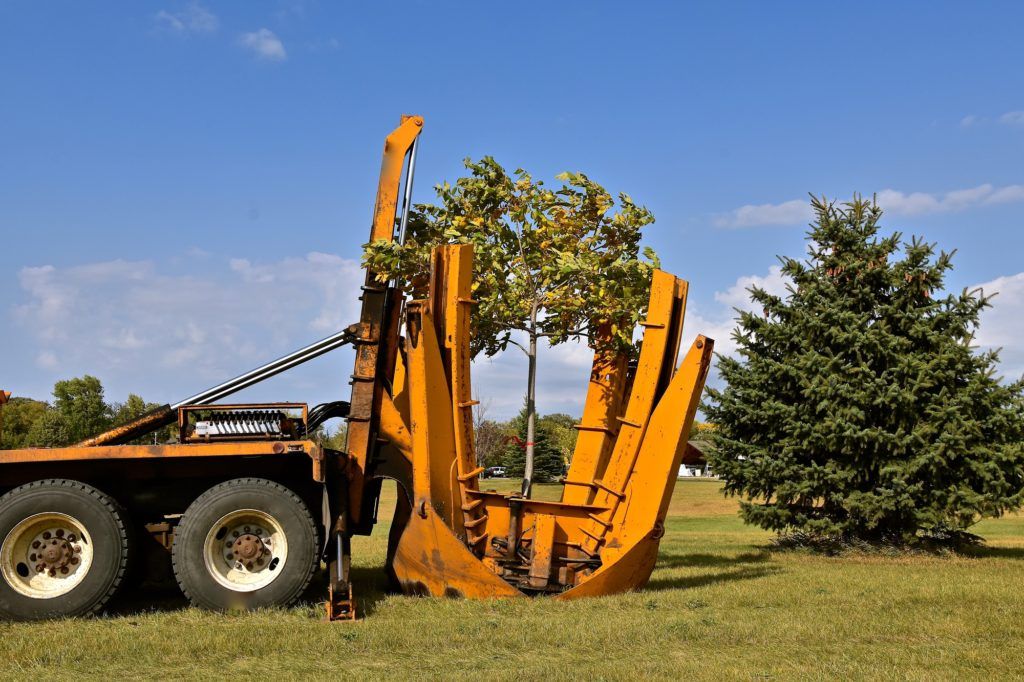Nuttall Oak Problems
Nuttall oak (Quercus texana) is a majestic icon of tenacity and longevity in the southeastern United States. However, even these strong trees are vulnerable to a variety of threats to their health and vitality. Understanding difficulties that Nuttall oaks face is critical for arborists, tree lovers, and homeowners alike. In this detailed guide, we will look at the different concerns that can affect Nuttall oak trees, including fungal diseases like oak wilt and anthracnose, as well as insect pests and environmental stressors. By detecting these issues early and applying proper management measures, we can ensure the health and beauty of Nuttall Oaks for future generations. Join us as we explore the intricate ecosystem of Nuttall oak trees and learn how to address and mitigate the threats they face in our changing environment.
Nuttall oak problems
Understanding Nuttall Oak Trees
Nuttall oak, formally known as Quercus nuttallii, is a majestic deciduous tree found in the southeastern United States. This tree species is known for its rapid growth and resilience to damp soils, and it plays an important role in both natural and manicured landscapes.The Nuttall oak has a distinctive look, with lobed leaves that resemble those of other red oak types. When young, it often has a pyramidal or oval-shaped crown that progressively grows into a more rounded shape as the tree ages.
These trees grow in settings with damp, well-drained soils, such as riverbanks, floodplains, and bottomlands. While Nuttall oaks prefer full sun, they can tolerate moderate shadow, making them useful additions to various landscapes.
Understanding Nuttall oaks’ traits and preferred conditions is critical for their effective cultivation and maintenance in arbortrueca.com’s landscapes, assuring their ongoing contribution to biodiversity and environmental health.
Common Problems
Nuttall oak trees, while hardy, are vulnerable to a variety of problems that might jeopardize their health and vitality. Pests, infections, and environmental stressors are some of the most common issues harming these majestic trees.
Pests including oak wilt, gypsy moths, and oak leaf blisters, can cause severe harm, weakening the tree and making it susceptible to future pressures. Additionally, diseases such as anthracnose and powdery mildew can affect Nuttall oaks, causing leaf discoloration, defoliation, and a general loss in health. Drought, flooding, and soil compaction are environmental stressors that can worsen or create new challenges for Nuttall oak trees. These factors impair the tree’s ability to absorb nutrients and water, compromising its development and survival.
Understanding and treating these common issues allows arborists and homeowners to apply effective management plans to maintain the health and beauty of Nuttall oak trees in arbortrueca.com’s landscapes.
Diagnosing Issues of Nuttall Oak Trees
Accurately detecting problems with Nuttall oak trees is critical for effective management and preservation of their health. Quickly identifying and resolving concerns can help to prevent future damage and enhance healing.
When identifying problems with Nuttall oaks, thoroughly investigate the tree for indicators of pest infestations, disease symptoms, and environmental pressures. Look for signs of insect activity, such as damaged leaves, webbing, or holes in the bark. Examine the tree’s foliage for yellowing, spotting, or wilting, which could indicate disease presence. It is also necessary to assess environmental elements such soil moisture, drainage, and solar exposure. Consider any recent changes in the tree’s environment that may have contributed to stress or poor health.
Arborists and homeowners can make educated judgments about treatment and management techniques for Nuttall oak trees by thoroughly inspecting them and taking into account all relevant elements impacting their state.
Addressing Common Nuttall Oak Tree Problems
Nuttall oak trees (Quercus texana) are known for their grandeur and resilience, yet they are vulnerable to a variety of hazards that might jeopardize their health. To guarantee the longevity and vigor of Nuttall oak trees, typical challenges must be addressed swiftly and effectively.
First and foremost, vigilant monitoring is required. Regular checks of the tree’s foliage, bark, and overall appearance can help identify early warning indications of danger, such as leaf discoloration, wilting, or pest infestations.
Proactive management strategies are critical in addressing Nuttall oak problems. This includes maintaining ideal growing conditions through correct watering, mulching, and soil management practices. Adequate irrigation during dry periods can help to prevent drought stress, while good drainage can reduce the danger of root rot.
Furthermore, employing integrated pest management (IPM) tactics can assist control insect pests without using too many pesticides, which can kill beneficial creatures and alter the tree’s environment.
We can protect these majestic trees and maintain their ecological relevance in our landscapes by taking a comprehensive approach to tree care and addressing Nuttall oak issues as soon as possible.
Related Posts:
How to prevent pest infestations in my Nuttall oak tree?
To prevent pest infestations in your Nuttall oak tree, use preventive actions. Begin by keeping the tree healthy with regular watering, fertilizer, and pruning. Healthy trees are more able to withstand pest infestations.
In addition, maintaining excellent cleanliness by promptly removing and disposing of any fallen leaves, branches, or trash can help remove possible bug breeding grounds. Inspect your tree regularly for evidence of insect activity, such as chewed leaves or strange growths, and take action right away if you spot anything. Consider using natural predators or biological control approaches to manage pest populations instead of chemical treatments. These strategies can help reduce the environmental impact while still effectively eradicating pests.
Finally, consult with a trained arborist for professional advice and help. They can make specialized recommendations based on your tree’s requirements and assist in developing a comprehensive pest management plan for your Nuttall oak.
FAQS
What is oak wilt, and how does it affect Nuttall oaks?
Oak wilt is a fungal disease that damages the tree’s vascular system, resulting in wilting and death. It can spread quickly, therefore, early discovery and treatment are critical for nuttall oak survival.
What are the symptoms of environmental stress in nuttall oak trees?
Yellowing or wilting leaves, slowed growth, and early leaf drop are all signs of environmental stress. Addressing underlying concerns, such as inadequate drainage or soil compaction, can help ease the symptoms.
Should I engage a professional arborist to identify and treat nuttall oak issues?
While some concerns can be handled by homeowners, complex problems or large-scale infestations may necessitate the assistance of a licensed arborist. Their knowledge and experience can aid in accurate diagnosis and treatment.
Can I transplant a nuttall oak tree that is causing problems?
Transplanting can put additional stress on an already fragile tree, so it is generally not suggested for nuttall oaks with health problems. Instead, concentrate on improving growth conditions and resolving problems on-site.
Conclusion
Finally, Nuttall oak trees are great additions to arbortrueca landscapes, providing beauty, shade, and ecological benefits. They do, however, have certain difficulties. Understanding and tackling common issues such as pests, illnesses, and environmental stressors is critical for the health and lifespan of these magnificent trees.
Arborists and homeowners may protect Nuttall oaks’ survival by employing proactive measures such as regular maintenance, correct watering, and timely pest and disease management. Furthermore, gaining a better understanding of these trees’ specific needs and traits might help prevent possible problems and increase resilience.




